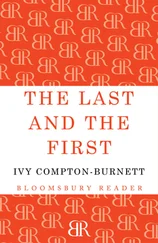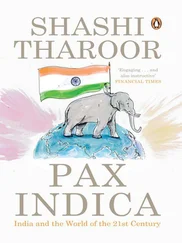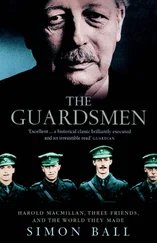The same applied to the retail business: Lyons supplied goods such as tea and cakes directly to small shops, with no wholesaler involved, dealing with 30,000–40,000 orders worth a few pounds each in a week. Meanwhile, the efforts of the armies of clerks culminated in little more than simple profit and loss accounts – the concept of management accounting was then still in its infancy. That the business remained comfortably in profit during the 1920s and 1930s owed more to Montague Gluckstein’s instinct for what would sell than to any detailed analysis of the company’s performance.
Booth saw that success in the long term would depend on a more systematic approach. In adopting this view he showed himself to be in tune with the most advanced ideas on scientific management that were then beginning to circulate on both sides of the Atlantic.
The term ‘scientific management’ originated with Frederick Winslow Taylor (1856–1915), a former Pennsylvanian steelworker turned engineering consultant. Taylor believed that losses to industry through inefficiency could be remedied through the application of systematic management, and that ‘the best management is a true science, relying upon clearly defined laws, rules and principles’. He proposed that rather than leaving it up to skilled workers to plan and execute jobs in manufacturing, managers should analyse every task to reduce it to the minimum number of essential movements – the ‘one best way’, as he termed it, of completing the task. They should then allocate tasks to specialised workers and give them appropriate incentives to perform them at a rate that maximised their efficiency.
Taylor was widely attacked by those who saw his methods as inhumane, and he died a disappointed man. But during the First World War, when labour was short and productivity at a premium, a new generation of disciples picked up and developed his ideas. Factories were invaded by eager young men with clipboards and stopwatches, carrying out the ‘time and motion’ studies that were an essential feature of Taylorism.
In the years following the war, the watchword of efficiency began to be heard in offices as well as factories. The business office as we know it today was itself a creation of the late nineteenth century. When most businesses were still small, family-run affairs, all they needed was a few clerks in the ‘counting house’ to keep the books and write letters. The level of education required for a clerk was not high by today’s standards – basic arithmetic and elegant handwriting were the main requirements – but as long as much of the population was illiterate, clerical work was a relatively high-status occupation. By the end of the nineteenth century, industrialisation had massively increased the size of manufacturing businesses, and vast new enterprises such as the railway companies had been created. There was an urgent need for staff to look after accounts, sales, marketing, personnel and all the other ‘non-productive’ functions of these businesses – functions that today seem to dominate the world of work, but which a century ago came a distant second to the business of making things. At the same time service industries such as banks and insurance companies grew to meet the needs of the large manufacturers, and public administration was also an expanding field. By the early years of the twentieth century governments were increasingly requiring companies to produce public accounts, and eventually to undergo external audits; the leather-bound ledgers of the past were no longer sufficient, and whole offices were dedicated to compiling accounts to satisfy shareholders and tax inspectors.
At the same time, the introduction of compulsory elementary education provided a ready pool of young people, both men and women, looking for an alternative to the skilled or unskilled manual work that had been the only choice for their parents. The numbers speak for themselves: between 1851 and 1901 the number of clerks in the labour force in the United Kingdom rose from around 70,000 to over 2 million. The proportion of these who were female rose from 0.1 per cent to 13.4 per cent in the same period; by 1981 it had reached 74.4 per cent.
The social changes went hand in hand with technological change, led all along by the United States. In that fast-growing country labour was scarce, and there was a great enthusiasm for machines that could increase productivity. The typewriter, patented in America in 1868, was taken up and promoted by Remington, the gunsmiths, who had found demand for their products falling after the end of the Civil War. In 1878 they brought out the Remington 2 typewriter, a design classic that remained in use for decades. Sales leapt from 146 in 1879 to 65,000 in 1890. The women who were entering the clerical labour force in increasing numbers proved to be particularly adept at using the new machine and so established their position in the hitherto male world of business, albeit at a low-paid level. Together with various forms of copying machine, the typewriter made it quicker and easier to communicate and to keep records of communications. Meanwhile, devices that we would hardly think of as ‘inventions’ today, such as index cards and vertical filing cabinets, revolutionised record-keeping. Adding and calculating machines, one popular version of which was patented by William Seward Burroughs in 1883, relieved clerks of the necessity to be accurate calculators themselves.
The office equipment industry boomed, led by a sales force that persuaded managers that simply by buying their machines they were buying greater efficiency. A dreadful poem published in The Clerk in 1937 epitomised this view:
Early to bed and early to rise
Is really very little good
Unless you mechanise.
But others cautioned against buying expensive machines without first analysing the functions of the office as a whole. Chief among these, and the author of several textbooks on office management, was William Henry Leffingwell, a former clerk in a Chicago photographic company, who had risen to become a ‘consulting management engineer’ – one of the first forerunners of the management consultants of today. He wrote: ‘The ingenuity of inventors and the persistence of machinery salesmen have brought about a condition in which the present-day office manager is not asking himself whether or not his office needs a machine of some kind, but what machine he shall choose from among the multitude offered.’
Leffingwell saw the office as fertile ground in which to sow the gospel according to Taylor. He published frequently in the monthly magazine System (founded in 1901, the forerunner of Business Week ), and brought out the first of several books, Scientific Office Management , in 1917. His verbose texts covered in minute detail the arrangement of desks to optimise work flow, the distance walked by clerks to reach the water fountain, the design of forms, and even the ‘one best way’ to open a letter. They remained influential for decades: the third edition of his Textbook of Office Management appeared in 1950, three years after his death. Business historians have not been slow to point out the irony that scientific management itself increased the bureaucratic workload through generating forms to be filled, activities to be monitored, and reports to be analysed and filed.
In 1919 Leffingwell founded the National Office Managers’ Association, creating a forum for research, debate and discussion. Its regular publications added to the prolific literature on the subject. Meanwhile, in the United Kingdom, the Office Machinery Users’ Association, founded in 1915, picked up the importance of giving system precedence over technology and renamed itself the Office Management Association.
Читать дальше












